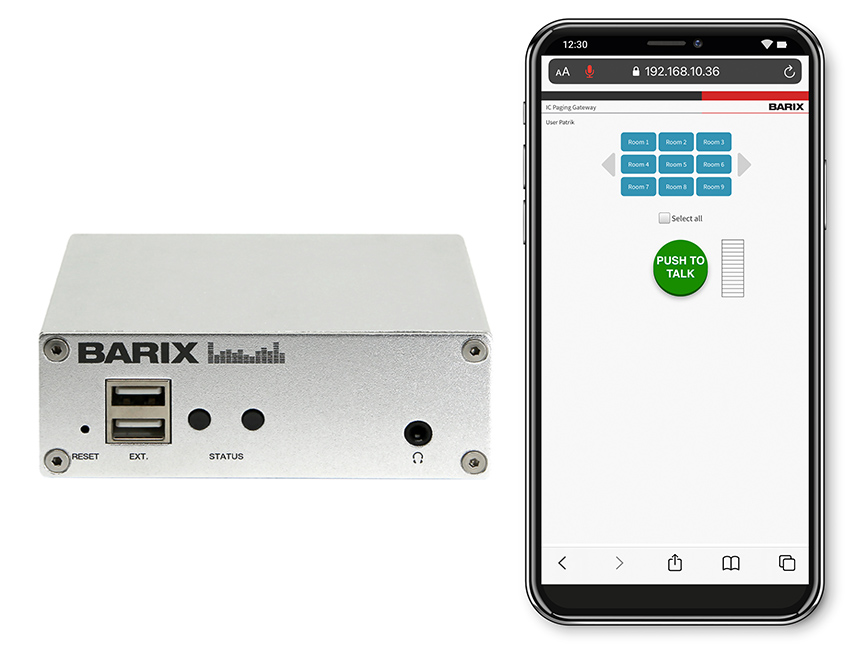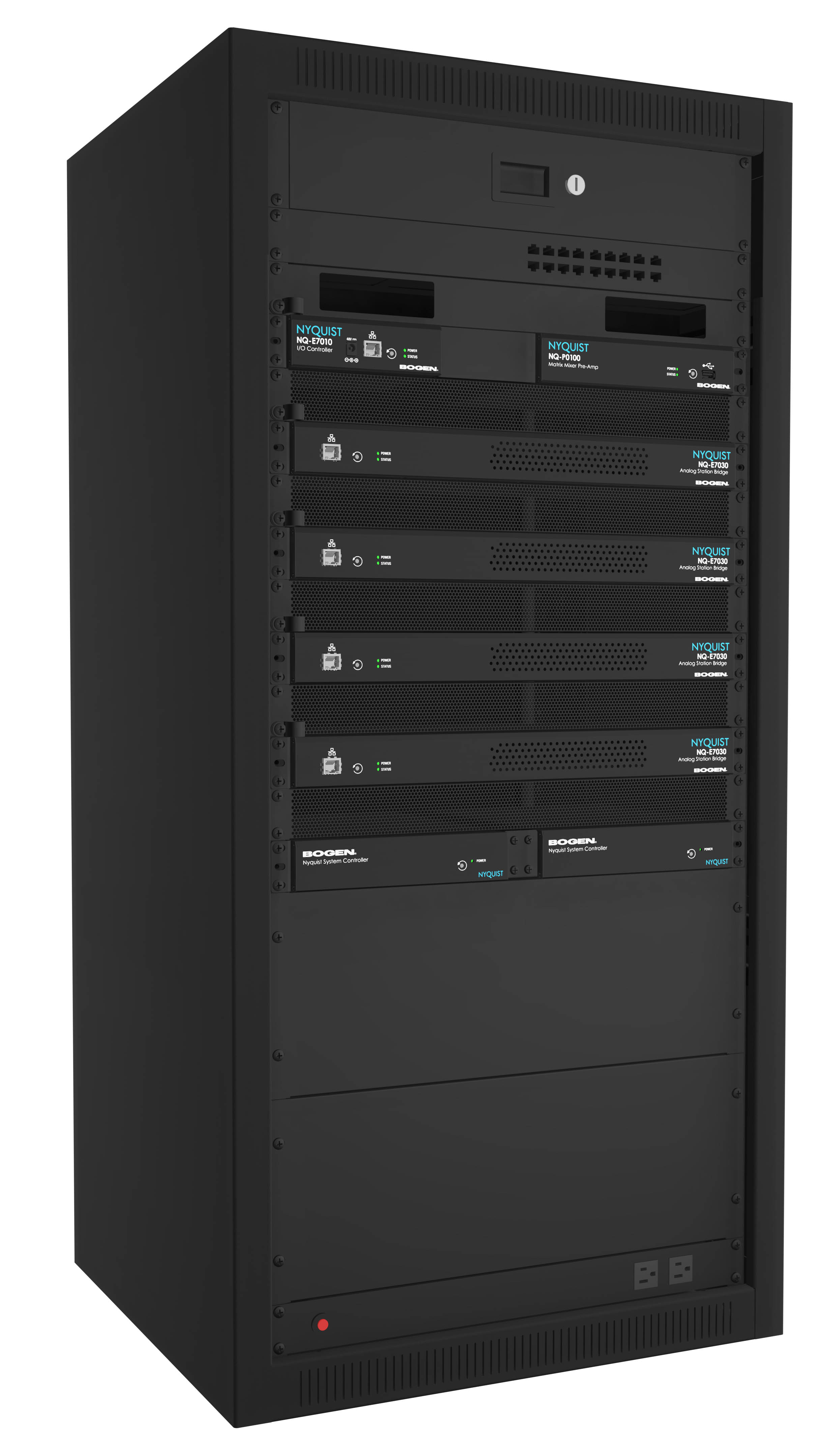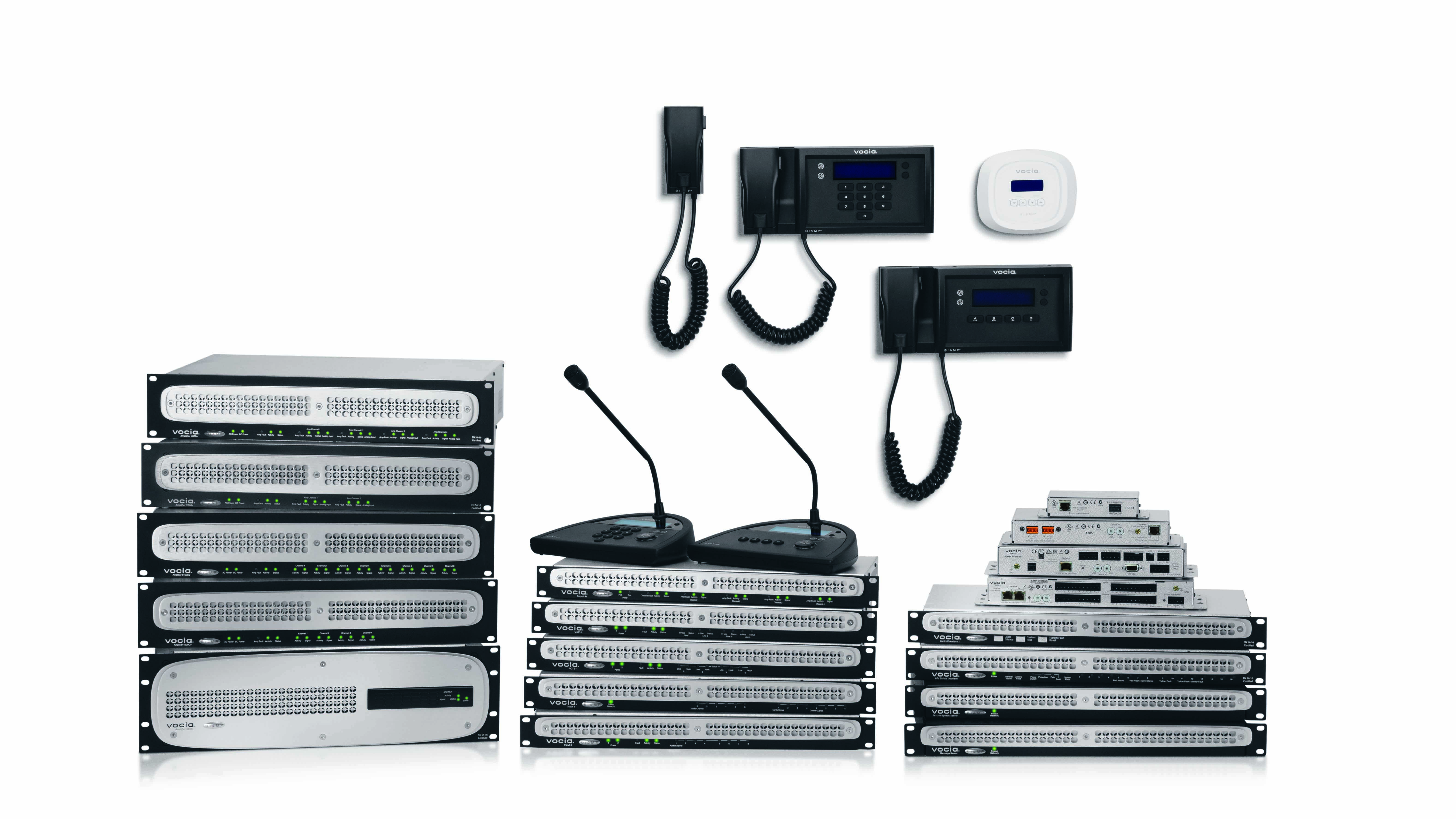Messaging That Matters
Mass notification systems provide integrator opportunities in the K-12 market.

Like everything in AV, mass notification systems have moved to the network, providing both integrators and end users increased flexibility, scalability, and customization. The K-12 market—where life safety is top priority—presents AV firms with the opportunity to address the need to deliver consistent, widespread messaging during emergency events.
AtlasIED, a communications solutions developer headquartered in Ennis, TX, offers the IPX Series, a family of networked IP endpoints including speakers, visual displays, and an IP-to-analog gateway that integrates with legacy systems. “It expands the traditional PA and intercom into that mass communication/life safety world, where you don’t have to have all of these disparate systems,” explained Gina Sansivero, vice president of marketing and corporate communications at AtlasIED. “Now you have [a solution] that’s cohesive for the entire school building, or for the campus, or for the district.”

In fact, Sansivero noted that most times, IPX is deployed on a district level, rather than as one-off deployments in a specific school. This is, in part, because districts tend to have an easier time obtaining funding for security-related expenses (as compared to what’s available for traditional AV-focused spending, for example). Districts are also reticent to prioritize one school over another when it comes to safety. “They’re going to say, ‘No, every child, every staff member is just as important as the next,’ and that’s how expansive this becomes,” she explained.
To extend mass notifications beyond the school premises, AtlasIED offers Singlewire’s InformaCast software, which will deliver alerts to mobile devices off-premises. “The same consistent messaging that goes out to our IPX product can be deployed off-premise to any of the instructors that might be teaching remotely, any of the students that might need to be kept up-to-date on certain campus-wide events, but also parents and community members,” Sansivero explained. Both IPX and InformaCast offer seamless integration with VoIP and other networks.
Legacy Leverage
Solutions capable of integrating with legacy systems (such as AtlasIED’s IPX IP-to-analog gateway) are particularly attractive to the K-12 market, Sansivero noted. Many schools still have analog speakers deployed throughout their facilities, and refresh cycles for AV equipment such as speakers can average between seven and 10 years. With the gateway, integrators can install IP endpoints into classrooms, the cafeteria, or hallways—and run the digital signal through the gateway and out to the analog speakers.
[What’s Next for Mass Notification Systems?]
“The ability to integrate the digital and the analog is a huge selling point for schools, because when they see ‘speaker,’ they think, ‘I’m going to have to replace all of the speakers in my classrooms,’” Sansivero said. “That’s not the case.”
A daily selection of the top stories for AV integrators, resellers and consultants. Sign up below.

Earlier this year, Barix, an IP audio and control solutions developer headquartered in Zurich, released its Paging Gateway M400. The device integrates with analog paging and PA systems, enabling users to send announcements from Android and iOS phones, as well as any computer on the local network. Messages are sent from a web browser (meaning no dedicated app is required), and the product will seamlessly integrate with Barix’s IP-based IC Paging solution to provide zone-based paging from web browsers and mobile devices.

Reto Brader, CEO at Barix, argued that the M400 leverages the ubiquity of mobile devices while recognizing the need to continue to integrate with legacy analog systems. “[It] provides a cost-effective way to update existing analog paging and public address installations, bringing them into the smartphone era,” he said.
Simple Under Pressure
Bogen Communications, a communications technology manufacturer headquartered in Orlando, FL, recently introduced the Nyquist E7000MCR preconfigured rack-mounted paging and intercom system. Based on the company’s Nyquist E7000 platform, this version is designed to facilitate deployment.

Previously, contractors would “have to buy all of the components, network it all together, and do all the configuration,” explained Ken Venuti, director of sales engineering at Bogen. “[We’ve simplified] some of that by pre-racking it, pre-wiring it, and pre-configuring it to the point where they can then take it into the school and begin customizing it for that school’s environment.”
Bogen has also released its Nyquist C4000 Version 4.0 software. One of its star features is Routines, which will launch scripted, automated action sequences. The system integrates with the National Weather Service; a scripted sequence for a weather event, for example, may be programmed to automatically run warning messages, lock or unlock certain doors within a facility, or issue shelter-in-place orders. Messages can be sent to desktops and mobile devices, and the system can also activate strobe lights.

“It doesn’t have to automatically notify the whole school. It can notify the front office and the front office can then decide what action to take,” Venuti said. “But you could take it all the way to the point where it requires no human interaction whatsoever.”
Venuti noted that features like Routines address the need to provide ease-of-use for users that are under duress. “In chaotic moments, people forget how to do things,” he said. “It’s got to be simple to use.”

Biamp, a networked technology systems developer headquartered in Beaverton, OR, offers Vocia, which handles paging, background music, and emergency communications. Paul Hand, senior product manager of building infrastructure solutions, explained that the system’s rules-based engine allows messaging to be configured based on scenario. (For example, if Situation X is happening, proceed with Message Y.)
Hand also highlighted Vocia’s zoning capabilities: “We can set up zones throughout a facility so that if there’s a certain event—for example, if there’s a fire in this area—we don’t want to direct people through that area to exit. We want to direct them to [another] area,” he explained. “We can do that inside the Vocia system with some forethought and with some rules-based engines.”

Because Vocia is network-based, it will push communications out from a single point to many, within one school or out to an entire district. Hand said this results in messaging consistency.
Support the Process
When selling to K-12 customers, Sansivero encourages AV integrators to obtain buy-in from a number of stakeholders. That means not just technology directors, but also security staff (such as the school resource officer), superintendents, and administrators. The approach is less about pushing specific products and more about assembling the right team on the customer’s side that has influence over security budgets. “The security funding is so much higher than the instructional technology funding in so many of these schools that my suggestion would be [to] get the life safety stakeholders involved,” she said.
Sansivero acknowledged that mass notification isn’t a standard offering for many AV systems integrators, especially those focused on deploying learning technologies. She encourages these companies to regard MNS as an opportunity to further expand on the solutions they provide, and emphasizes that oftentimes there is more K-12 funding available for mass notification systems than there is for instructional tech.
[The Classroom of the Future, Today]
“My pitch to systems integrators is: you know paging, you know intercom,” she said. “A mass communications system is an extension of that, and it gets into life safety and full-building systems. I see it being a real benefit to an AV systems integrator’s portfolio.”
During the design phase of an MNS deployment, Sansivero underlined the importance of consulting with actual end users, such as those employees responsible for launching alerts. “One of the mistakes that we’ve definitely seen is [integrators] not interviewing the school users enough to determine what their processes are, and then design a system that supports those processes but then also adds efficiency,” she said.
It’s counterproductive, she argued, to install a modern MNS if it’s going to be used like an old-fashioned P.A. system. “You want to help them translate how their processes can now be more efficient, or how they can upgrade their processes to leverage the technology,” she added.
Carolyn Heinze has covered everything from AV/IT and business to cowboys and cowgirls ... and the horses they love. She was the Paris contributing editor for the pan-European site Running in Heels, providing news and views on fashion, culture, and the arts for her column, “France in Your Pants.” She has also contributed critiques of foreign cinema and French politics for the politico-literary site, The New Vulgate.
